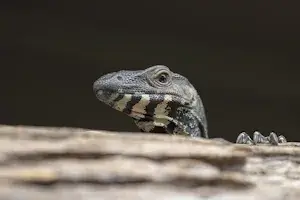Incubating and Hatching Monitor Lizard Eggs: A Guide for Successful Breeding
Monitor lizard species are among the most fascinating reptiles in the world, and breeding these majestic animals is an exciting goal for many experienced keepers. Incubating the eggs requires in-depth knowledge, careful planning, and the right equipment. In this blog post, you’ll learn how to successfully incubate monitor lizard eggs, which factors are crucial, and how to raise healthy hatchlings.
1. Basics of Monitor Lizard Breeding
Before you begin incubation, you should ensure you understand the basics of monitor lizard breeding:
- Species-Specific Requirements: Each monitor lizard species has individual needs regarding temperature, humidity, and egg-laying.
- Suitable Breeding Pairs: Only healthy, fully grown animals should be used for breeding.
- Successful Mating: Observe the animals’ behavior during mating and ensure that the females have optimal conditions for egg-laying.
2. Preparing for Egg Laying
After mating, female monitor lizards typically lay their eggs within 4-6 weeks. During this time, you should prepare a suitable egg-laying box:
- Box with Substrate: Use moist, diggable materials such as sand, vermiculite, or coconut fibers.
- Egg-Laying Area: The box should be large enough for the female to dig and safely lay the eggs.
- Humidity and Temperature: Keep the substrate lightly moist and the ambient temperature between 27–30°C (80–86°F).
3. Collecting the Monitor Lizard Eggs
Once the female has laid her eggs, they should be carefully collected and transferred to the incubator:
- Mark the Eggs: Use a soft pencil to mark the top of the eggs to ensure they aren’t accidentally rotated.
- Gentle Removal: Carefully remove the eggs from the substrate. Some monitor lizards lay their eggs in clusters that should remain together.
- Act Quickly: Transfer the eggs to the prepared incubator as soon as possible to avoid temperature fluctuations.
4. The Incubator: Setup and Maintenance
A reliable incubator is crucial for the success of the incubation process.
- Choosing the Incubator:
- Commercial Devices: Reptile incubators offer precise temperature and humidity control.
- DIY Incubators: Styrofoam boxes with heating cables and thermostats can also be used.
- Temperature and Humidity:
- Temperature: The optimal temperature ranges from 28 to 32°C (82–89°F), depending on the species.
- Humidity: Ideal relative humidity is 80–90% to prevent the eggs from drying out.
- Monitoring Devices: Use a thermometer and hygrometer to regularly check the values.
- Substrate for the Eggs: A proven substrate is vermiculite, mixed with water in a 1:1 ratio by weight. Place the eggs carefully in small depressions in the substrate.
5. The Incubation Period: Patience is Key
Monitor lizard eggs require an incubation period of 90 to 200 days, depending on the species and conditions. During this time, constant monitoring is necessary:
- Temperature Control: Fluctuations can negatively affect embryonic development.
- Humidity Regulation: Keep the substrate evenly moist by adding distilled water.
- Ventilation: Ensure adequate airflow to prevent mold growth.
6. Temperature-Dependent Sex Determination
For some monitor lizard species, temperature during incubation can influence the sex of the hatchlings:
- Lower Temperatures: More frequently lead to female offspring.
- Higher Temperatures: Favor the development of male offspring.
A medium temperature is often a good compromise for achieving a balanced sex ratio.
7. Signs of Hatching
Towards the end of the incubation period, the first signs of hatching will appear:
- Eggshell Softening: This indicates that the embryos are ready to hatch.
- Pipping: The hatchlings break through the eggshell with a special “egg tooth”.
Patience: Allow the hatchlings to go through the process on their own. Intervention is usually unnecessary.
8. Caring for Newly Hatched Monitor Lizards
After hatching, the hatchlings require special care:
- Hatchling Enclosures: Initially, keep the hatchlings individually or in small groups in terrariums with moist substrate and hiding spots.
- Temperature: The ambient temperature should be between 28 and 32°C (82–89°F), with a warmer area under the heat lamp.
- First Shed: The hatchlings will shed their skin a few days after hatching.
- First Feeding: Offer small insects like crickets or mealworms to the hatchlings.
9. Common Problems and Solutions
- Infertile Eggs: These can be removed early to prevent mold growth.
- Mold on Eggs: Carefully remove mold using a cotton swab and a mild disinfectant solution.
- Embryo Death: Can be caused by temperature fluctuations or improper humidity.
10. Tips for Successful Breeding
- Educate yourself thoroughly about the specific needs of the monitor lizard species.
- Invest in high-quality incubation equipment to ensure stable conditions.
- Regularly monitor the eggs without disturbing them unnecessarily.
Conclusion
Incubating monitor lizard eggs is a challenging but extremely rewarding task. With the right conditions, careful monitoring, and patience, you can successfully raise healthy monitor lizard babies. The process requires dedication and precision, but it will reward keepers with the joy of watching these magnificent creatures hatch and grow.

